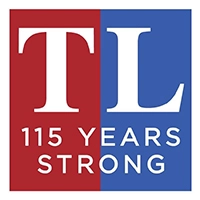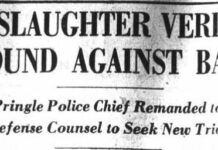
House erected and occupied by the Rev. Jacob Johnson. It stood at the northeast corner of River and Union streets, Wilkes-Barre, and in later years was owned and occupied by Dr. C. F. Ingham. Photograph taken in 1887. From the pamphlet published by the Wilkes-Barre Record in 1911 for Frederick C. Johnson, M.D. Historiographer Wyoming Historical and Geological Society.
Click here to subscribe today or Login.
During the second Pennamite-Yankee War in the early 1770s for control of the Wyoming Valley, the Yankee Susquehanna Company settlers sent word back to the Colony of Connecticut to send a pastor.
The Rev. Jacob Johnson of Groton, Conn., was keeping close tabs on what was happening in the Wyoming Valley noting the region was deeded to Connecticut settlers under the 1768 Treaty of Fort Stanwix with the Iroquis Indians.
Johnson called the Pennamite-Yankee War the “Susquehanna Affair.”
As Connecticut settlers located in the Wyoming Valley in the 1760s, a Baptist minister and a Congregational minister came along but returned only after staying a short time.
“At this juncture, Jacob Johnson, who from his home in Connecticut had watched the Wyoming movement, determined to identify himself…he visited the valley in the summer of 1772 and was so favorably impressed,” according to a pamphlet written in 1907 by Frederick C. Johnson, a historiographer for the Wyoming Historical & Geological Society. The pamphlet was published by the Wilkes-Barre Record newspaper of which Frederick C. Johnson was publisher.
The pamphlet by Frederick Johnson about the biography of his great-great grandfather the Rev. Jacob Johnson is accessible online at the Library of Congress.
Johnson returned to Connecticut but was summoned back to the Wyoming Valley after he received a letter, dated Aug. 23, 1772, when the townspeople of Wilkesbarre gathered to pay Johnson 60 sterling pounds a year to become the valley’s pastor, according to the Wyoming Republican and Farmer’s Herald, a newspaper based in Kingston, on Nov. 21, 1838.
Rev. Johnson was further given 50 acres of any land of his choice in any one of the five townships that would make up Westmoreland, later Luzerne County. The land selected by Rev. Johnson would consume parts of Wilkes-Barre Township and parts of today’s Plains Township.
With the pledge of land and British pounds, Rev. Johnson and his family relocated making the Wyoming Valley their permanent home.
Rev. Johnson is credited with being the first pioneer preacher of the Wyoming Valley as he was pastor of the Presbyterian Church.
The Wilkes-Barre Record in the late 1800s and early 1900s often wrote history articles recalling the frontier and early days of the Wyoming Valley. Rev. Johnson was featured in the history column of the Record published April 3, 1896.
Johnson became a pastor after graduating Yale College and acquainted himself with the Iroquis Indians learning the Mohawk language. He was protected by the British army as he traveled throughout the frontier lands of New England and New York.
“In 1772, Rev. Johnson was appointed as a pioneer preacher by the Connecticut Susquehanna Land Company to preach the Gospel in the Westmoreland Colony. Here, he labored enduring all the hardships of frontier life,” the Record reported.
About six years after Rev. Johnson arrived in the Wyoming Valley, he was present inside the little stockade of Forty Fort when the Battle of Wyoming took place July 3, 1778. Like many Connecticut settlers, the Rev. Johnson and his family returned to New England until 1781, when they moved back to Wilkesbarre.
Rev. Johnson would build his family’s home at today’s North River and Union streets, Wilkes-Barre, on fifty acres of land extending from Main Street along North Street to the Susquehanna River.
Rev. Johnson preached the Gospel in the Wyoming Valley from 1772 until his death in 1797, minus the three years he was in New England after the Wyoming Massacre. According to a story in the Wilkes-Barre Record on July 21, 1898, the body of Rev. Johnson was buried on Westfield Hill in Wilkes-Barre.
“His grave on Westfield Hill, at the head of Franklin street, was an object of local interest for many years, but his bones found a final resting place in Hollenback Cemetery where they are marked by a granite monument bearing an inscription narrating his life and labors,” the Record reported.
Westfield Hill once contained a small cemetery located at North Franklin and North streets, Wilkes-Barre.
The Record story of July 21, 1898, noted the corner stone of the First Presbyterian Church bears the date 1772, the Rev. Johnson’s coming marking the establishment of that congregation.







